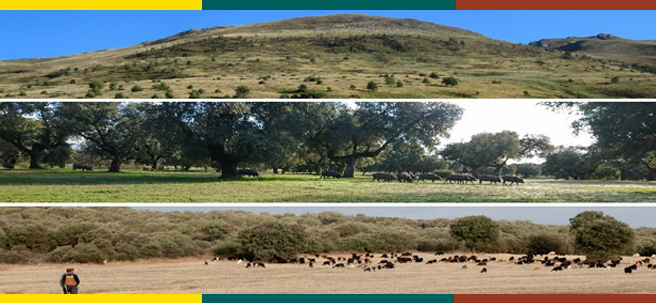
30 de November de 2020
Cambio climático y gestión de recursos naturales
November 30, 2020 - The National Rural Network (RRN), in collaboration with the Ministry for Ecological Transition and the Demographic Challenge, held the fourth meeting of the Working Group on Forest Pastures and Silvopastoral Systems on November 13. This meeting highlighted that extensive land-based livestock farming is an efficient means of contributing to the objectives of the CAP, and its characteristics are consistent with the achievement of the environmental and animal welfare objectives included in the EU Green Deal strategies. Thanks to the new CAP, the sector will benefit from basic income support, eco-schemes, associated aid for the agricultural and livestock sector, redistributed payments for small and medium-sized farms, and rural development aid.
- The National Rural Network, in collaboration with the Ministry for Ecological Transition and the Demographic Challenge, is calling on various rural stakeholders to establish objective criteria that differentiate the various livestock farming systems and establish a gradation of their level of extensiveness.
- This virtual meeting serves as a forum for coordinating measures aimed at the sector, within the framework of the current debate on the design of the Common Agricultural Policy post-2020 .
This multidisciplinary meeting was attended by rural stakeholders involved in the management of forest pastures and silvopastoral systems , from diverse fields such as administration, research, universities, environmental organizations and associations, representatives of the Extensive Livestock Farming Platform, as well as other groups closely linked to the livestock sector, with the aim of discussing the necessary process of characterizing extensive livestock farming ; especially in the determination of objective criteria that allow differentiating the various livestock farming systems and establishing a gradation of their level of extensivity. Such characterization would be the previous step to be able to articulate measures aimed at the sector, especially within the framework of the current debate for the design of the Common Agricultural Policy beyond 2020 .
Conclusions
Some of the conclusions to highlight from the day were:
- The importance of holding forums and meetings, focusing on extensive livestock farming, to approach reality and resolve the problems that arise at all levels and that affect the management of livestock farms.
- The importance of improving communication, and " the need to provide clearly defined and unambiguous concepts, translating the specificities of each autonomous community into a consistent language."
- The need for a farm information system , whose administrative tool allows all the information that the livestock farmer, shepherds and administrations may have to be integrated into the same database and allows for the implementation of interventions, as well as the need to integrate common cartography, and allow all existing layers of geographic information to be unified in a single application.
The meeting concludes with the aim of designing a roadmap to work on defining and specifying livestock systems, taking into account that the entire agri-food sector, and therefore extensive livestock farming, will receive additional funding through the Recovery Plan in addition to the EAFRD funds.
Documentation of interest
The day began with two documents for discussion, which are recommended reading:
This report was prepared by WWF Spain , Trashumancia y Naturaleza , the Spanish Pasture Society and the Platform for Extensive Livestock Farming and Pastoralism , and published in July 2020. It seeks to put different parameters on the table, combinable with each other, to characterize the degree of extensivity of livestock farms and reach a consensus position. Subsequently, MAPA itself will develop the methodology to be used to identify the farms and propose the most appropriate measures to support extensive livestock farming in the new CAP, especially in the First Pillar.
This report has been prepared for the General Subdirectorate of Livestock and Game Products of the Ministry of Agriculture, Fisheries, Food (MAPA), by the Entretantos Foundation and the Platform for Extensive Livestock Farming and Pastoralism , for the specific study of extensive livestock farming in our country, based on the need to substantially improve the knowledge, definition and diagnosis of its situation.









